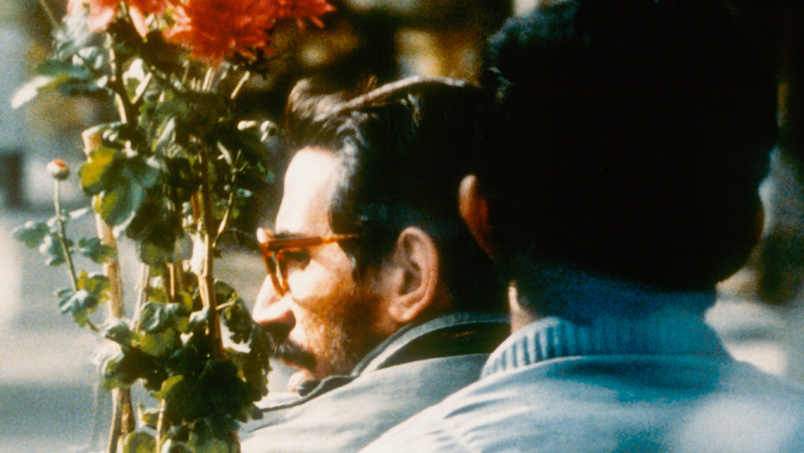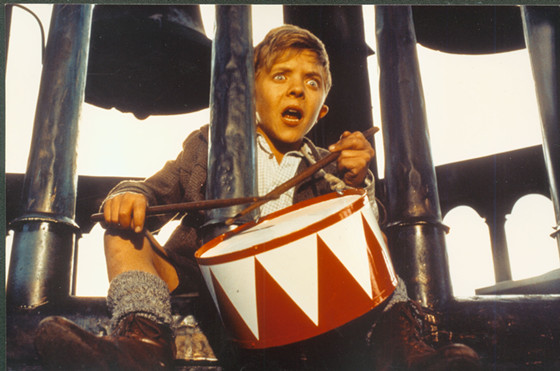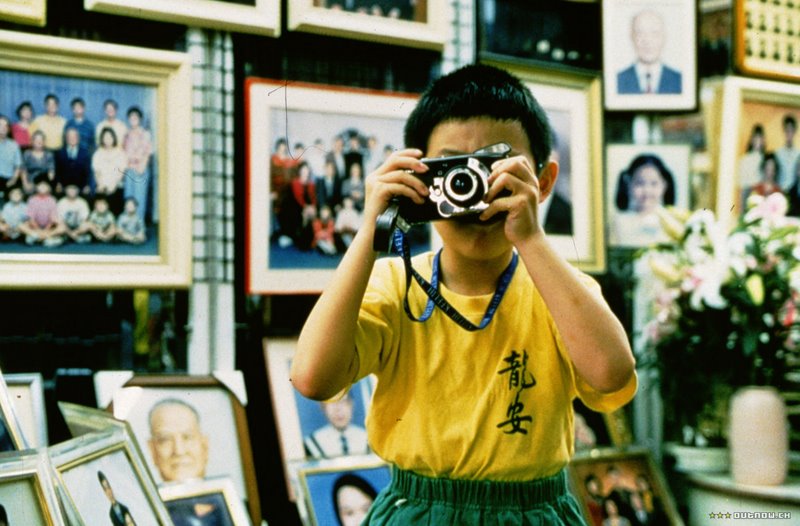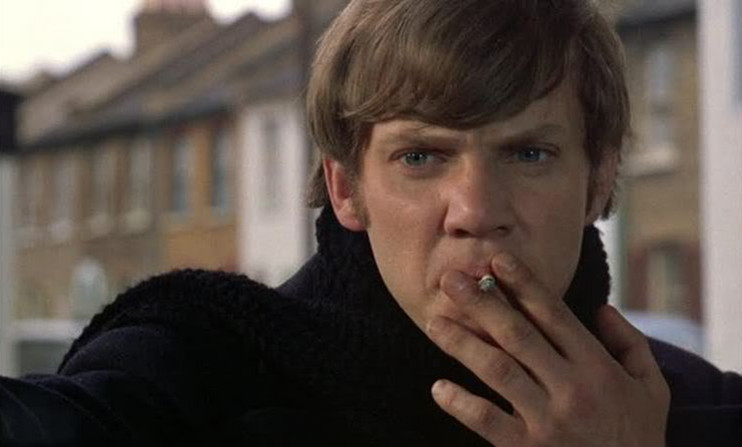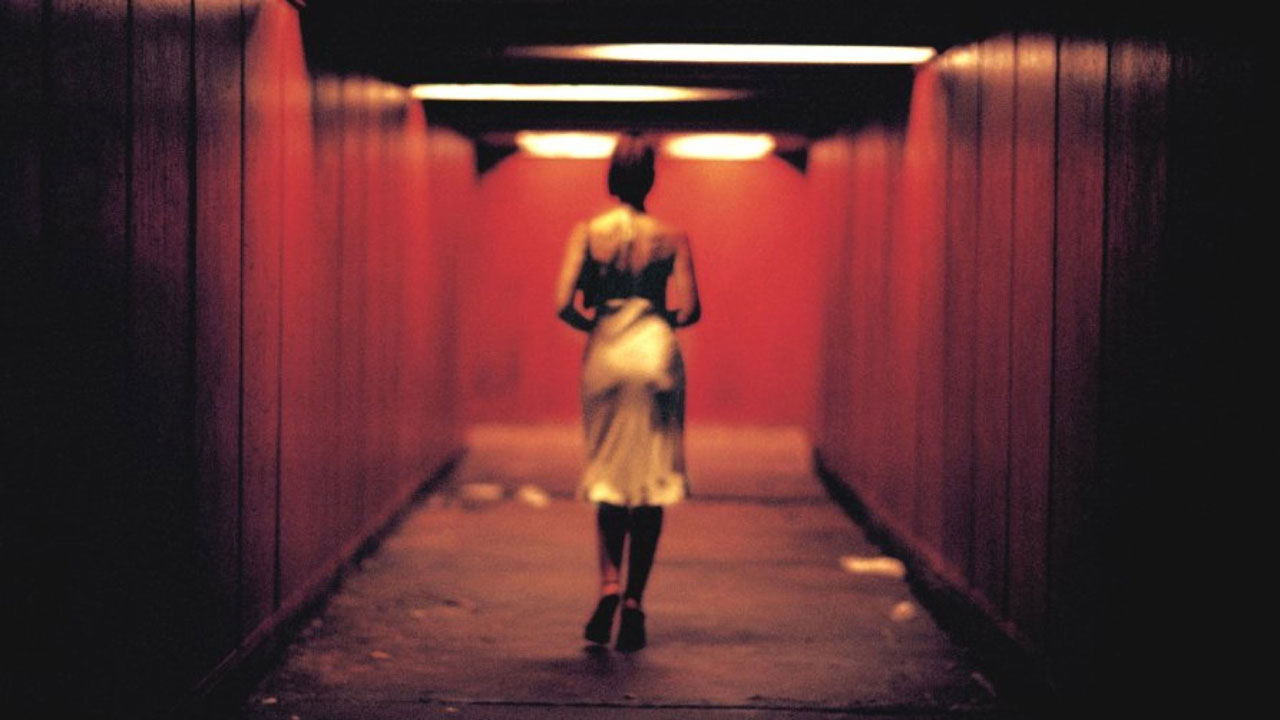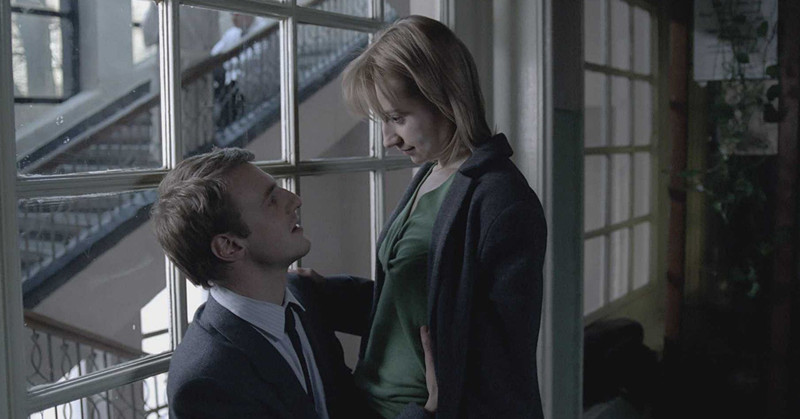13. Iranian New Wave
Iranian cinema is extremely unique and different. Although it had been going for years, the industry didn’t start up until the ruling regime finally allowed the 1969 release of “The Cow”. Government censorship is strict but the government started allowing more films to be made. Because of the countries strict censorship, only a few western films are allowed into the country, however the Internet now allows Iranians to watched banned films.
Iranian films are made with censorship in mind. Scripts are submitting to the government before they are allowed to be made. Filmmakers must hide political messages. Women must not be shown not wearing a veil and therefore films normally never show a woman at home, alone with her family. Sex and nudity is never allowed. In the first wave, many films were banned, only a few were released after heavy editing.
In the second wave, filmmakers not only took inspiration from neo realism but documentaries. Iranian filmmakers have kept rolling when an actor gets frustrated and loses charter. Improvisation is favored and in some films we can hear the director in the background talking to the actors. Some films are re-enactments of real life events acted by either actors or those who lived them.
Major Figures:
Jafar Panahi
Abbas Kiarostami
Mohsen Makhmalbaf
Notable Films:
“The Cow” (1969 dir. Daryush Mehrjui)
“Offsides” (Banned in Iran 2006 dir. Jafar Panahi)
“Ten” (Banned in Iran 2002 dir. Abbas Kiarostami)
“Close up” (1990 dir. Abbas Kiarostami)
“A Moment of Innocence” (1995 banned until 1997 dir. Mohsen Makhmalbaf)
“A Separation” (2011 dir. Asghar Farhadi)
“This Is not a Film” (Illegally made / Banned in Iran 2011 dir. Jafar Panahi and Mojitaba Mirtahmasb)
This is an ongoing wave, which may die under censorship. Some films had to be smuggled out of Iran such as “This is not a film”, which was apparently done so with a flash drive hidden inside of a birthday cake. Some filmmakers are threatened with jail sentences. Director Martin Scorsese has admired these films along with film critic and filmmaker Mark Cousins whom has documented Iranian cinema numerous times.
Since a lot of the Iranian films are almost documentaries, western documentaries have begun to blur the lines and make films about real events using real people rather than a traditional documentary. This was done in the 2012 documentary “The Act of Killing”.
“When you take a tree that is rooted in the ground, and transfer it from one place to another, the tree will no longer bear fruit. And if it does, the fruit will not be as good as it was in its original place. This is a rule of nature. I think if I had left my country, I would be the same as the tree.” – Abbas Kiarostami
14. New German Cinema
On the twenty eighth of February 1962, twenty-six young German filmmakers signed the Oberhausen Manifesto. This ideal of West German cinema fueled the New German cinema wave, which developed years later.
Much like other movements they were fed up with the norm. They wanted to make expressive films inspired by the French new wave that the studios wouldn’t allow.
The filmmakers made low budget art films and covered the issue of politics in West Germany, something the studios didn’t want. With hard work by creative filmmakers, they did what the studios couldn’t and weren’t afraid to take the story in new directions. Despite the films all being apart of the same movement, each director had different styles and made different films.
Major Figures:
Rainer Werner Fassbinder
Werner Herzog
Wim Wenders
Volker Schlondorff
Notable Films:
“Paris, Texas” (1984 dir. Wim Wenders)
“The Tin Drum” (1979 dir. Volker Schlondorff)
“Ali: Fear Eats the Soul” (1981 dir. Rainer Werner Fassbinder)
“Stroszek” (1977 dir. Werner Herzog)
The films were accepted by audiences and gained the recognition that was deserved. German cinema changed just as New Hollywood had changed Hollywood. Werner Herzog has inspired Harmony Korine. Fassbinder sadly passed at the age of thirty seven in 1982 from a drug overdoes. The others still continue to make films today, inspiring new filmmakers
“I’d like to be for cinema what Shakespeare was for theatre, Marx for politics and Freud for psychology: someone after whom nothing is as it used to be.” – Rainer Werner Fassbinder
15. Taiwan New Wave
In the 1980’s the home video market boosted but most of the films in Taiwan, the home of the Golden Horse film festival, were from Hong Kong. Desperate for some of the market, the CMPC (Central Motion Picture Corporation) funded new filmmakers in order to boost the Taiwanese film industry and compete with Hong Kong cinema.
Because films were easier to get funding for, these new filmmakers were able to make artistically expressional films taking inspiration from Neo realism. This was the First wave. What’s known as the second wave started in 1990 when films began to change to take on the competition of Hollywood. The second new wave still retained artistic expression but was less serious to fight against the blockbusters in box office.
Major Figures:
Ang Lee
Edward Yang
Hou Hsiao-Hsien
Tsai Ming-Liang
Notable Films:
“Eternal Summer” (2006 dir. Leste Chen)
“Three Times” (2005 dir. Hou Hsio-Hsien)
“Vive L’amour” (1994 dir. Tsai Ming-Liang)
“Taipei story” (1985 dir. Edward Yang)
“Prince of Tears” (2009 dir. Yofan)
“A City of Sadness” (1989 dir. Hou Hsiao-Hsien)
“Yi Yi” (2000 dir. Edward Yang)
“Pushing Hands” (1992 dir. Ang Lee)
With a high level of the Taiwanese films being pirated, the wave started to struggle against the high budgeted foreign films. Although the second wave has died, it’s possible for a third wave to come as Taiwanese filmmakers still have hope and have become recognized by film festivals around the world.
However, Taiwanese television could become a bigger market than cinema and prevent a third wave in cinema. American Taiwanese filmmaker Ang Lee, one of the most well known out of the second wave, has brought styles from the Taiwanese new wave and adapted them for Hollywood.
“I look at American movies, the big muscles, and try to apply that to Chinese film-making.” – Ang Lee
16. British New Wave
The cinema of the United Kingdom was strong. Walter Disney used his profits from the British box office to re-invest in British made Disney films. Stanley Kubrick moved to Hertfordshire, England with his British wife and made his films in Britain even if they were set elsewhere like Vietnam. GPO Film Unit was a subdivision of the UK General Post Office, which helped fund the industry. Hammer and Ealing studios films were packing cinemas around the world.
However, the films that were being made were much like Hollywood and left out realism. French new wave and Kitchen sink realism of the British theatre, art, novels, film and television of the time influenced a few filmmakers that shot in a cinema vertie documentary style similar to the free cinema documentary movement.
Major Figures:
Ken Loach
Tony Richardson
Lindsay Anderson
Richard Lester
Karel Reisz
Notable Films:
“This Sporting life” (1963 dir. Lindsay Anderson)
“The Loneliness of the Long Distance Runner” (1962 dir. Tony Richardson)
“if….” (1968 dir. Lindsay Anderson)
“Kes” (1969 dir. Ken Loach)
“A Hard Day’s Night” (1964 dir. Richard Lester)
“Saturday Night and Sunday Morning” (1960 dir. Karel Reisz)
“The L-Shaped Room” (1962 dir. Bryan Forbes)
“Tom Jones” (1963 dir. Tony Richardson)
The films helped the British film industry. The movement ended when Hollywood blockbusters and mainstream Bond films won the popularity but ideals of the British new wave continued to inspire and can be seen every so often in British cinema and televison dramas after the 1960s.
“If the cinema is any kind of force for social change, then it’s a force for the bad, because most films are about one guy with a gun solving a problem” – Ken Loach
Check out our essential British New Wave film list.
17. New French Extremity
When audiences first watched “The Great Train Robbery” in 1903, the ending shot of a man shooting at the screen terrified cinemagoers for dear life. 1990’s “Goodfellas” paid homage to that shot. Despite being more violent, audiences were desensitised and had become accustomed to media portraying these types of acts.
If filmmakers like Quentin Tarantino wanted to shock, they were forced to resort to more extreme methods showing the brutal severing of an ear or a toe. Horror became the biggest selling genre besides pornography.
French filmmakers became inspired by David Cronenberg and wanted to take things to an extreme leave whilst remaining artistic using transgressive stories. Not all the films are horror but they feature extreme elements and exploits realism during sex, murder, and rape scenes.
Major Figures:
Gaspar Noe
Xavier Gens
Pascal Laugier
Notable Films:
“Frontier(s)” (2007 dir. Xavier Gens)
“Martyrs” (2008 dir. Pascal Laugier)
“Baise-Moi” (2000 dir. Virginie Despentes and Coralie Trinh Thi)
“High Tension” (2003 dir. Alexandre Aja)
“Irreversible” (2002 dir. Gaspar Noe)
“Pola X” (1999 dir. Leos Carax)
“Trouble Every Day” (2001 dir. Claire Denis)
French Extremity is inspiring and expanding. It’s now a European movement that includes Lars von Trier, who has portrayed real sex and an infant child falling from a window. It’s also inspiring films world wide to push the limits. They face criticism and some films struggle with distribution because of extreme content. However, extremist Filmmakers Alwxandre Aja and Xavier Gens have made it to Hollywood.
“There is no line between art and pornography. You can make art of anything. You can make an experimental movie with that candle or with this tape recorder. You can make a piece of art with a cat drinking milk. You can make a piece of art with people having sex. There is no line. Anything that is shot or reproduced in an unusual way is considered artistic or experimental.”– Gaspar Noe
Check out our essential French Extremity film list.
18. Romanian New Wave
Young filmmakers started the very current Romanian new wave with mixed emotions about capitalism. For many years under the regime of Ceausescu, Romanian cinema didn’t exist. In 2004 a short film “Trafic” directed by Catalin Mitulescu won the Short Film Palme d’Or and inspired other Romanian filmmakers.
Most Romanian new wave films either tell the stories of the communism that plagued the country for so long or stories of the new Romanian struggle to adapt after the fall of the Berlin wall. The films are realist black comedies filmed in a minimalist style.
Major Figures:
Cornellu Porumboiu
Cristian Mungiu
Cristi Pulu
Notable Films:
“Tales from the Golden Age” (2009 Multiple directors including Cristian Mungiu)
“The Death of Mr. Lazarescu” (2005 dir. Cristi Pulu)
“12:08 East of Bucharest” (2006 dir. Cornellu Porumboiu)
“4 Months, 3 Weeks and 2 Days” (2007 dir. Cristian Mungiu)
“California Dreamin’ (2007 dir. Cristian Nemescu)
“Child’s Pose” (2013 dir. Calin Peter Netzer)
More and more films are coming from the Romanian new wave and gaining notable recognition. After years of oppression and government censorship, Romanians are finding ways to express themselves without fear of government interference. The movement is not dead yet and will continue and inspire.
“I had the experience of working on a film for somebody else, on a foreign production. They were very nice people, but I discovered it is very difficult for me to have somebody else interfere with my film. I wouldn’t like to work on anything unless I have complete control.” – Cristian Mungiu
Check out our essential Romanian New Wave film list.
Author Bio: The international filmmaker, Anthony Crossland was born 24th November 1989 in Watford, UK and holds duel citizenship with the U.S.A. In 2012 Anthony graduated from Full sail university with a degree in film studies and has since gone on to work in the film and television industry.
